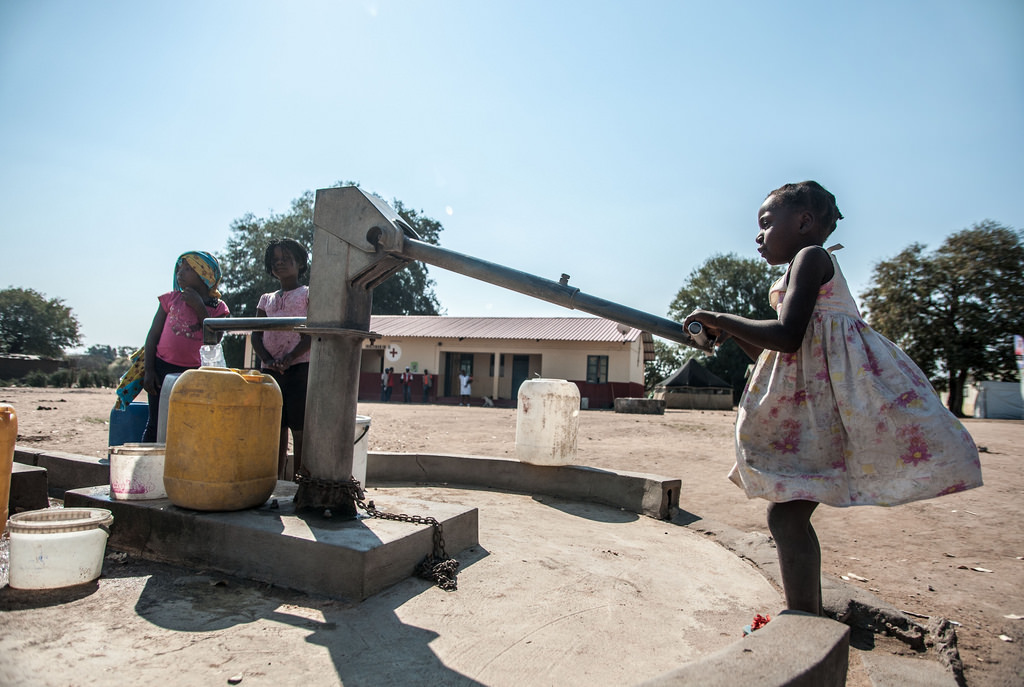South Africa, Mozambique, Iran —
Early in 2018, people thought that by April, Capetown, South Africa was going to reach “Day Zero” – the day the city would run out of water. Over 3.5 million people live in and around Capetown. Luckily, some rain fell and people now think Capetown may have enough water to last until next year. But Capetown is not the only place that is running out of water.
Water is so ordinary that we often don’t think much about it. We use water for everything we do. We drink it; we use it to cook our food; we wash our dishes and clothes with it; we use it for baths, showers, and toilets. Water is used to grow our food; it is used to make energy; factories use water to make their products and to clean up afterward.

(Source: Climate.gov.)
In many areas, the water that people have used for years is starting to dry up. There can be many reasons for this. Much water comes from holes in rocks deep underground called “aquifers”. Many aquifers are almost empty. Others can’t be used for drinking because they have been polluted.
Around the world, governments have built dams to block rivers and collect huge pools of water called reservoirs. Now, partly because of changing weather patterns and partly because there are more humans using more water, some of those reservoirs are beginning to go dry.

(Source: 6000.co.za, via Flickr.)
That is what happened in Capetown. After a drought (time when no rain falls) that lasted for years, Theewaterskloof Dam, Capetown’s main source of water, was about 87% gone. There are other reservoirs for Capetown, but they were also low. To save water, Capetown limited people to a little less than nine gallons (50 liters) of water a day. That’s almost enough for a single 4 minute shower. (Don’t forget about drinking, cooking, and washing, though!)
Capetown, South Africa
Mozambique
In Mozambique, just north of South Africa, the government has put some areas on “orange alert”. That means that the taps only work every other day, and no one can use the water to grow crops.

Many pumps like this one were replaced by taps, but now may be needed again.
(Source: Aurélie Marrier d’Unienville/IFRC, via Flickr.)
In Mozambique, some areas just got tap water a few years ago. Before that, they used pumps. Now the taps are running dry and they may need to fix the pumps.

(Source: Medbrokl ertement, from Wikimedia Commons.)
To survive, people are walking a long way to get to working taps and are carrying the water home on their heads. Some people who don’t live near working taps are having a hard time finding water.
Maputo, Mozambique
Iran
In Iran, there have been many protests since December of last year. The protests have happened around the country for many different reasons. But the shortage of water is one of the biggest reasons. In Isfahan province, where there are around 5 million people, Day Zero could come as early as May.

The drought is more serious where the map is red.
(Source: VOA.)
Isfahan, Iran
Problems like these are also happening in other places around the world, such as Iraq, India, and Spain. The World Resources Institute lists 30 countries where the stress of water shortages will be “extremely high” by 2040. The list includes countries such as Bahrain, Kuwait, Israel, Saudi Arabia, Jordan, Iraq, Pakistan, Chile, Turkey, and Greece.
As these problems become greater, countries may disagree more about who gets to control sources of water. And the world will have to work together to figure out how to make sure there’s enough water to drink, to grow food, and to run factories.
